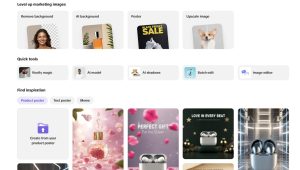Are you looking to establish a strong brand identity that resonates with your target audience? One key component that can help you achieve this is a compelling brand story. A brand story is a strategic narrative that communicates the essence of your brand, its values, and its origins. It’s a way to connect with your customers on an emotional level, and differentiate your brand from competitors.
Telling your brand story can help you create a deeper connection with your customers, and build brand loyalty. By sharing the story of your brand, you can communicate your values and mission in a way that resonates with your target audience. A compelling brand story can also help you stand out in a crowded marketplace, and create a unique identity that sets your brand apart.
In this article, we’ll explore the importance of a brand story, and provide tips on how to create a compelling narrative that resonates with your customers. We’ll also share some examples of brands that have successfully used their brand story to build a strong identity and connect with their audience. Whether you’re a startup or an established brand, a strong brand story can help you establish a unique identity and build a loyal customer base.
The Birth of the Brand
If you’re starting a business or looking to rebrand, it’s important to understand the history of branding. The concept of branding has been around for thousands of years, and it’s evolved significantly over time. In this section, we’ll explore the birth of the brand, including the founding story, vision, and mission.
The Founding Story
The history of branding dates back to ancient times. In Ancient Norse, a Scandinavian language, the word “brandr” means “to burn.” Originally, a brand was a burning piece of wood and later described as a torch. By the 1500s, it became common to brand cattle in order to show ownership. This practice eventually led to the creation of logos and trademarks.
In the late 1800s and early 1900s, companies began to use branding to differentiate themselves from their competitors. One of the first examples of modern branding was Coca-Cola, which used its logo and distinctive bottle shape to stand out in a crowded market. Other companies followed suit, creating logos and slogans to help consumers identify their products.
The Vision and Mission
A brand’s vision and mission are crucial to its success. The vision is the company’s long-term goal, while the mission is the company’s purpose. A strong vision and mission can help a brand stand out in a crowded market and attract loyal customers.
For example, Fairmont Hotels and Resorts has a vision of becoming the world’s leading luxury hotel brand. Its mission is to provide exceptional service and create memorable experiences for its guests. This vision and mission have helped Fairmont establish itself as a leader in the hospitality industry.
When creating your brand’s vision and mission, it’s important to consider your target audience and what sets your brand apart from its competitors. Your vision and mission should be clear, concise, and memorable, so that customers can easily understand what your brand stands for.
In summary, the birth of the brand dates back thousands of years, and it has evolved significantly over time. Understanding the founding story, vision, and mission of your brand can help you create a strong and memorable brand identity.
The Brand Personality
Your brand personality is the set of human characteristics that you attribute to your brand. It is the way you want your brand to be perceived by your customers. It is an essential aspect of your brand story because it helps differentiate your brand and enhances customer perception.
Values
Your brand values are the principles that guide your brand’s behavior. They are the beliefs that your brand stands for and the things that your brand cares about. Your brand values should align with your customers’ values, and they should be reflected in every aspect of your brand, from your messaging to your visual identity.
To define your brand values, think about what your brand stands for and what you want to achieve. Consider your target audience and what they care about. Your brand values should be authentic and reflect your brand’s personality.
Voice
Your brand voice is the way your brand communicates with your customers. It is the tone and style of your messaging, and it should reflect your brand’s personality. Your brand voice should be consistent across all of your messaging, from your website copy to your social media posts.
To develop your brand voice, think about your brand’s personality and how you want to be perceived by your customers. Consider your target audience and what type of language and tone will resonate with them. Your brand voice should be authentic and consistent with your brand values.
Visual Identity
Your brand’s visual identity is the way your brand looks. It includes your logo, color scheme, typography, and other visual elements. Your visual identity should reflect your brand’s personality and values and should be consistent across all of your brand’s touchpoints.
To develop your brand’s visual identity, consider your brand’s personality and values and how you want to be perceived by your customers. Choose colors, fonts, and other visual elements that reflect your brand’s personality and values. Your visual identity should be distinctive and memorable, making it easy for customers to recognize your brand.
The Brand Journey
Your brand journey is the story of how your brand came to be, from its inception to where it is today. It’s a narrative that captures the essence of your brand and communicates it to your audience. A brand journey is an essential part of your brand story, and it helps you establish a connection with your audience.
Key Milestones
Your brand journey should highlight the key milestones that have shaped your brand. These milestones could include the moment of inspiration, the launch of your first product, or a significant partnership. These milestones help your audience understand the journey you’ve been on and how far you’ve come.
To make it easier for your audience to follow your brand journey, you can create a timeline that highlights the key milestones. This timeline can be a visual representation of your brand’s history, and it can help your audience understand the context of your brand story.
Challenges Overcome
Every brand journey has its share of challenges. These challenges could be financial, operational, or strategic. It’s important to highlight these challenges in your brand journey, as they demonstrate your resilience and determination to succeed.
When you talk about the challenges you’ve overcome, you can also highlight the lessons you’ve learned along the way. These lessons can be valuable insights that your audience can learn from.
To make it easier for your audience to understand the challenges you’ve overcome, you can use bullet points or tables to highlight the key points. You can also use bold text to emphasize the most important lessons you’ve learned.
Your brand journey is an essential part of your brand story, and it helps you establish a connection with your audience. By highlighting the key milestones and challenges you’ve overcome, you can create a compelling narrative that captures the essence of your brand.
Brand Impact
Your brand story can have a significant impact on your business. It can influence the market and attract loyal customers. Here are two ways your brand story can impact your business:
Influence on the Market
A well-crafted brand story can set your business apart from competitors and attract new customers. It can create a unique selling proposition that resonates with your target audience. By telling your brand story, you can showcase your values and mission, which can help build trust with customers.
Additionally, a compelling brand story can help you stand out in a crowded market. It can differentiate your business and make it more memorable. This can lead to increased brand awareness and customer loyalty.
Customer Testimonials
Your brand story can also impact your customers. By sharing your brand story, you can create an emotional connection with your customers. This connection can lead to increased customer loyalty and advocacy.
Customer testimonials are a powerful way to showcase the impact of your brand story. By sharing stories of how your brand has positively impacted customers, you can build trust with potential customers. This can lead to increased sales and revenue for your business.
In conclusion, your brand story can have a significant impact on your business. By crafting a compelling brand story and sharing it with your target audience, you can differentiate your business and attract loyal customers.
The Future of the Brand
As a marketer, you know that brand storytelling is critical to your success. But what does the future hold for brand storytelling? Here are some insights into what you can expect in the years to come.
Upcoming Projects
One of the most exciting developments in brand storytelling is the rise of immersive experiences. Brands are increasingly looking for ways to create interactive, multi-sensory experiences that engage consumers on a deeper level. This might include virtual reality experiences, interactive installations, or even live events that bring a brand’s story to life.
Another trend to watch is the use of data to personalize brand stories. With advances in AI and machine learning, brands can now use data to create highly personalized stories that resonate with individual consumers. This might include personalized videos, interactive websites, or even chatbots that tell a brand’s story in a way that feels tailored to each user.
Long-Term Goals
Looking further ahead, the future of brand storytelling is likely to be even more focused on authenticity and transparency. Consumers are increasingly looking for brands that are open and honest about their values, their practices, and their impact on the world. Brands that can tell a compelling story about their commitment to social responsibility and sustainability are likely to be the ones that succeed in the long run.
Another trend to watch is the rise of brand communities. Brands that can create a sense of community around their products or services are likely to be the ones that build the strongest relationships with consumers. This might include online forums, social media groups, or even physical meetups where fans of a brand can come together to share their stories and experiences.
In conclusion, the future of brand storytelling is exciting and full of possibilities. By embracing new technologies, focusing on authenticity and transparency, and building strong communities around their products, brands can create compelling stories that resonate with consumers and drive long-term success.
Marietta Arnold is a branding and design enthusiast who draws inspiration from hobbies like hiking, photography, and art exploration. With a background in graphic design, she shares insights on branding strategies and logo design trends. Stay updated with Marietta’s work for the latest in branding and design.



